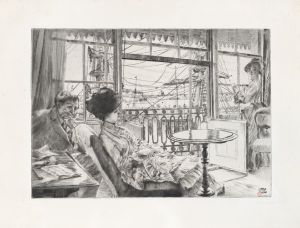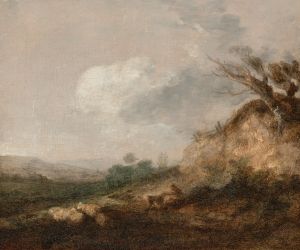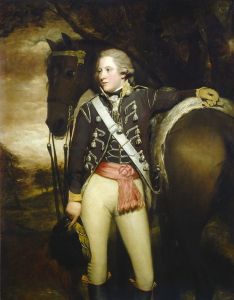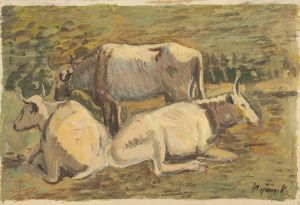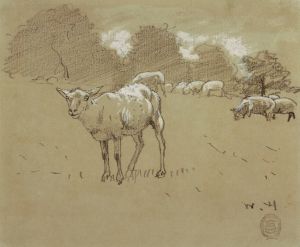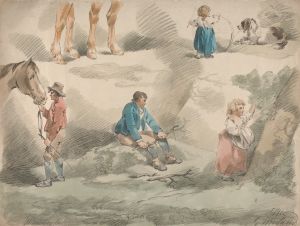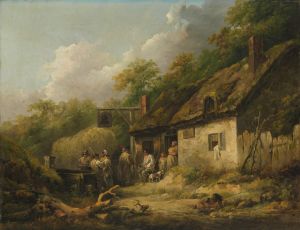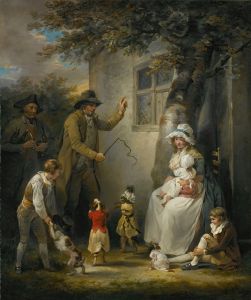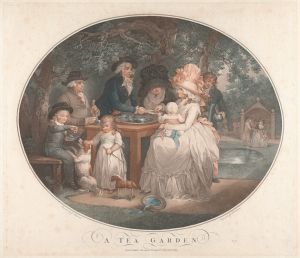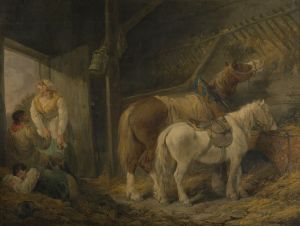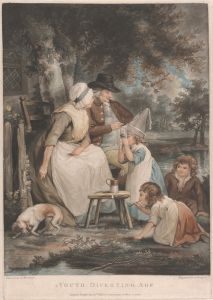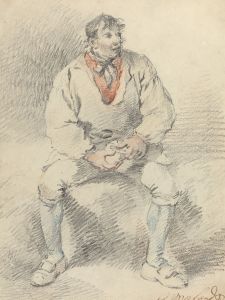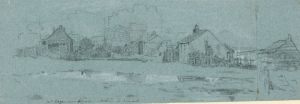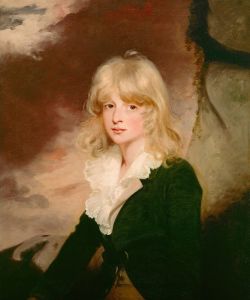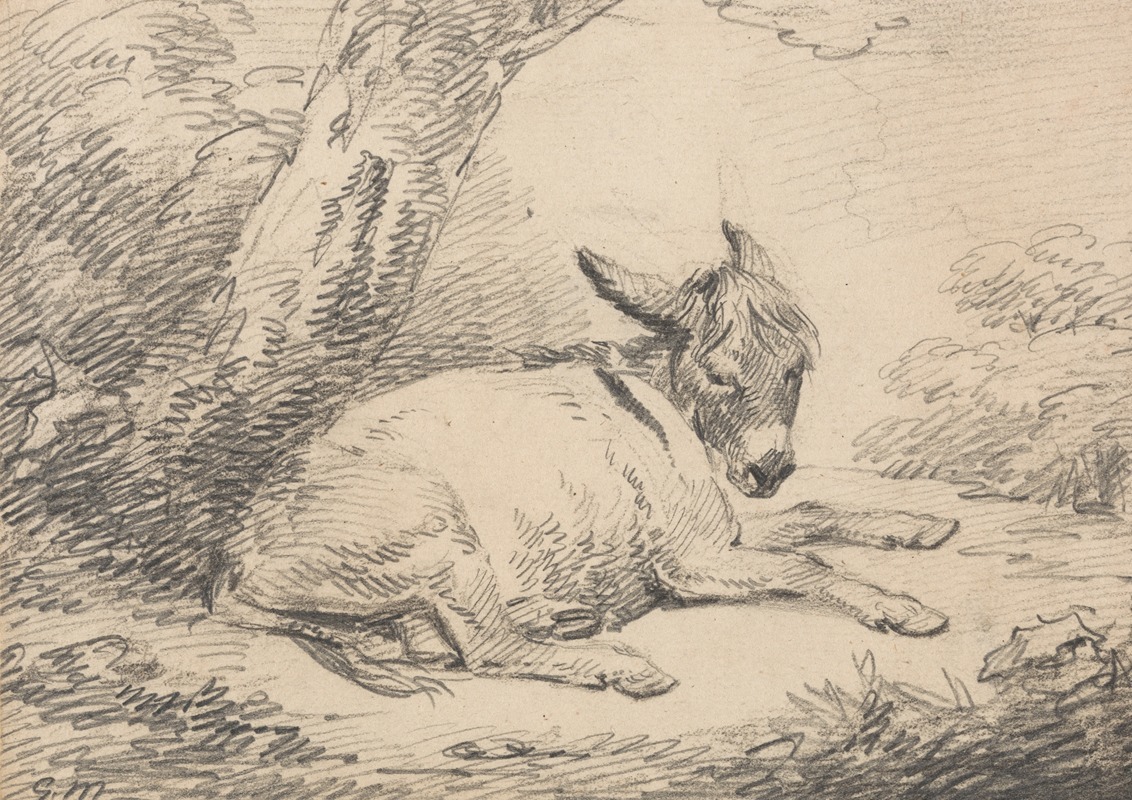
Study of a Donkey Under a Tree
A hand-painted replica of George Morland’s masterpiece Study of a Donkey Under a Tree, meticulously crafted by professional artists to capture the true essence of the original. Each piece is created with museum-quality canvas and rare mineral pigments, carefully painted by experienced artists with delicate brushstrokes and rich, layered colors to perfectly recreate the texture of the original artwork. Unlike machine-printed reproductions, this hand-painted version brings the painting to life, infused with the artist’s emotions and skill in every stroke. Whether for personal collection or home decoration, it instantly elevates the artistic atmosphere of any space.
George Morland was an English painter known for his rustic and pastoral scenes, often depicting rural life and animals. "Study of a Donkey Under a Tree" is one of his works that exemplifies his skill in capturing the essence of the countryside and its inhabitants. Morland was born in London in 1763 and was the son of the artist Henry Robert Morland. He showed an early aptitude for art, and by the age of ten, he was already exhibiting his work. Throughout his career, Morland became known for his ability to portray animals with a sense of realism and character, which is evident in this particular study.
"Study of a Donkey Under a Tree" is a painting that highlights Morland's attention to detail and his ability to convey the tranquility of rural life. The composition typically features a donkey, a common subject in Morland's work, standing or resting under the shade of a tree. This setting not only provides a naturalistic backdrop but also serves to emphasize the peaceful coexistence of the animal with its environment. Morland's use of light and shadow in such works often adds depth and dimension, bringing the scene to life.
Morland's paintings were popular during his lifetime, and he was a prolific artist, producing a large number of works. His ability to capture the subtleties of animal behavior and the nuances of rural settings made his paintings appealing to a wide audience. The donkey, in particular, was a subject that Morland returned to frequently, as it symbolized the simplicity and hard-working nature of rural life, themes that resonated with the public during the late 18th and early 19th centuries.
Despite his success, Morland's life was marked by personal struggles, including financial difficulties and issues with alcohol. These challenges often overshadowed his artistic achievements, but they did not diminish the quality of his work. Morland's paintings, including "Study of a Donkey Under a Tree," continue to be appreciated for their charm and technical skill.
Morland's influence extended beyond his lifetime, as his works were widely reproduced in engravings, making them accessible to a broader audience. This helped to cement his reputation as a significant figure in British art. His ability to capture the essence of rural life and his skillful portrayal of animals have ensured that his work remains relevant and appreciated by art enthusiasts and collectors.
"Study of a Donkey Under a Tree" is a testament to Morland's talent and his dedication to depicting the beauty of the natural world. While specific details about this particular painting may be limited, it is representative of Morland's broader body of work, which continues to be celebrated for its contribution to the genre of pastoral art. Through his paintings, Morland offered a glimpse into the serene and idyllic aspects of rural life, capturing moments of quiet beauty that continue to resonate with viewers today.





